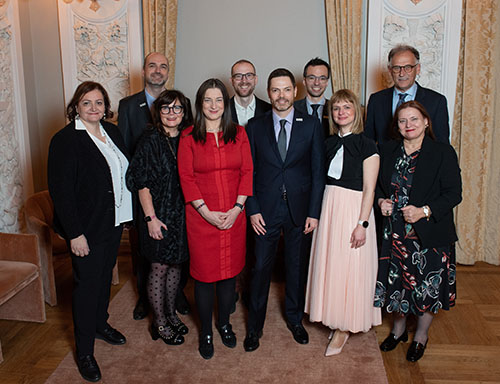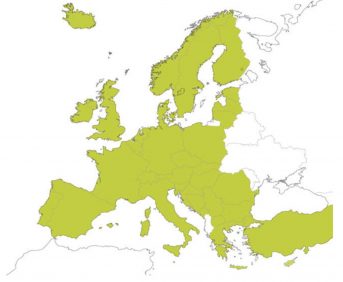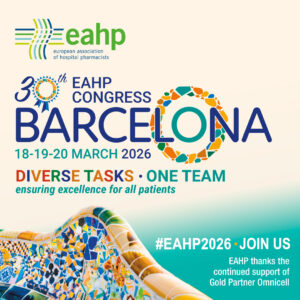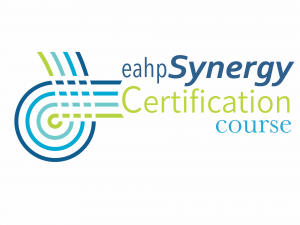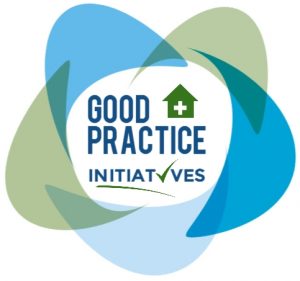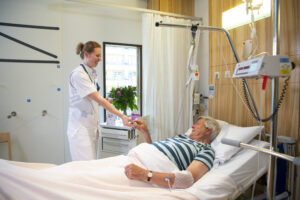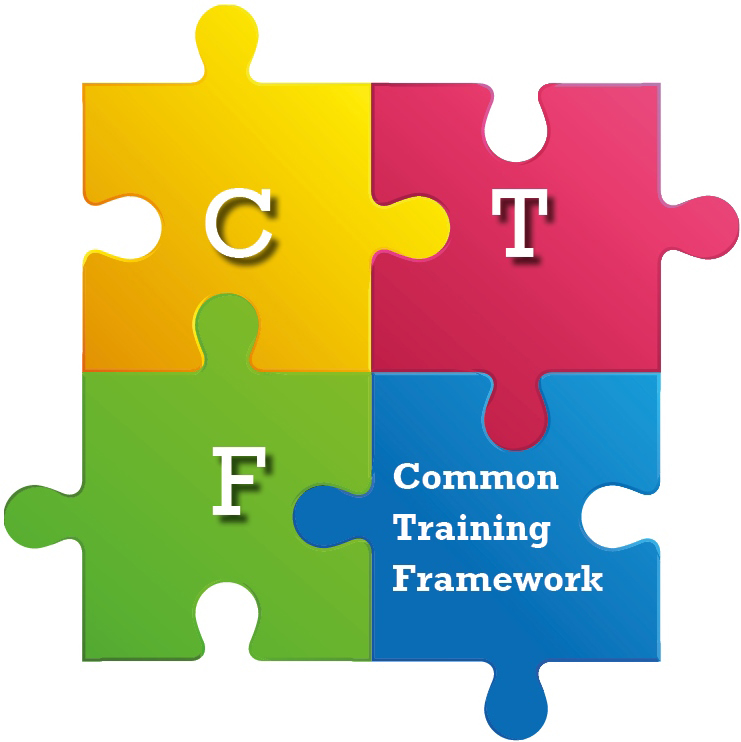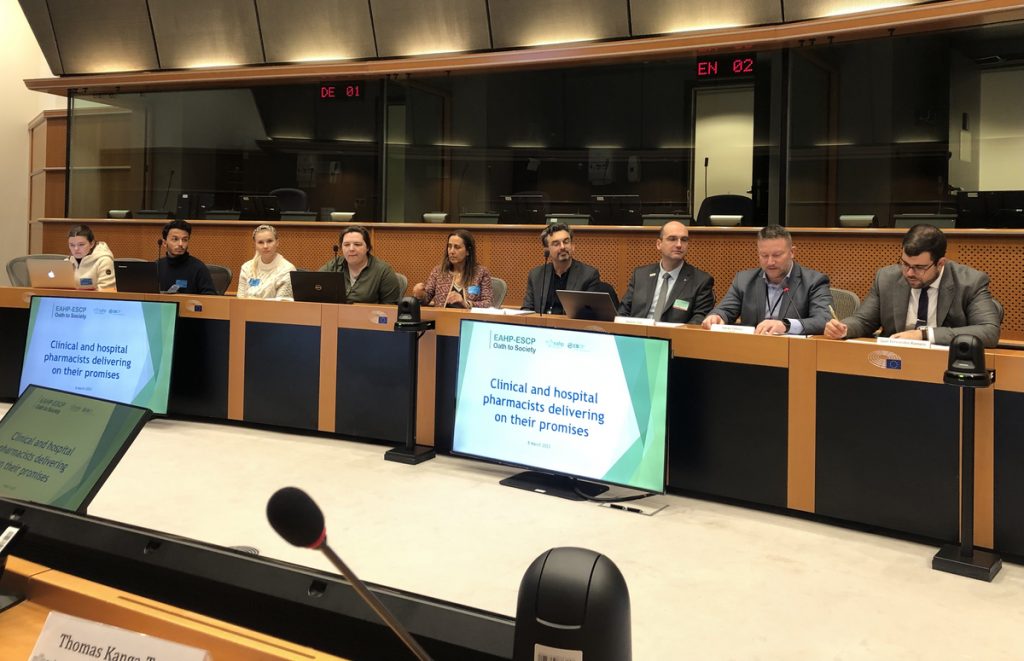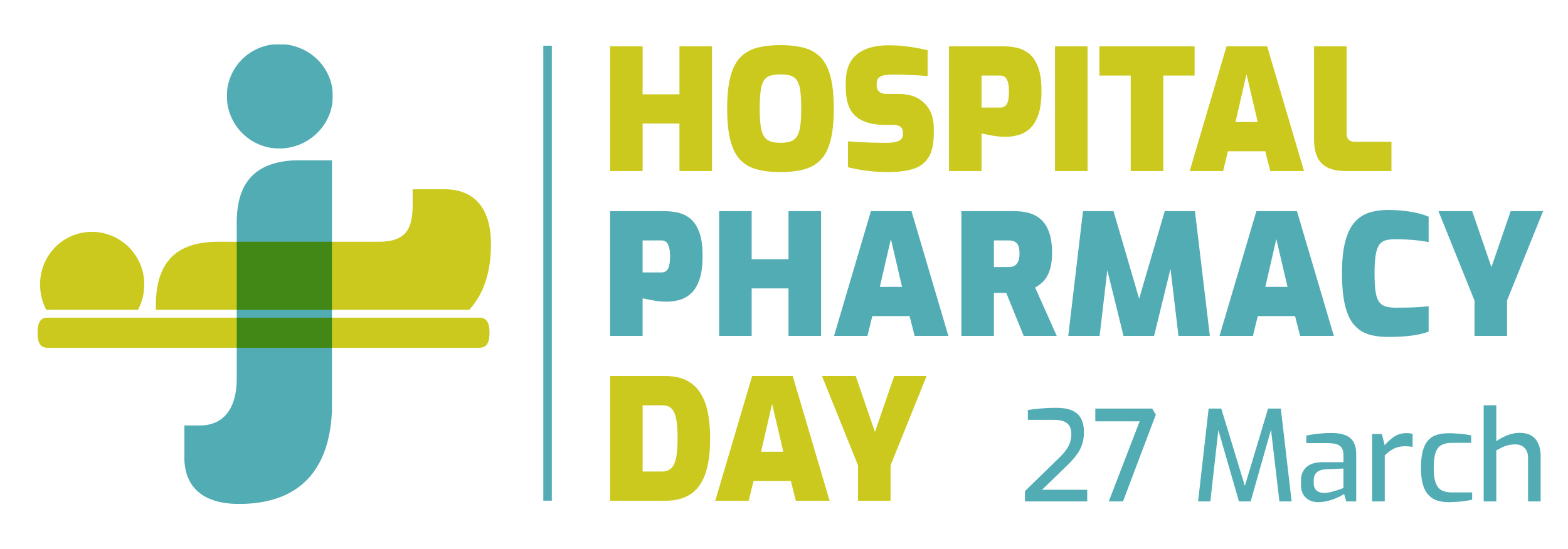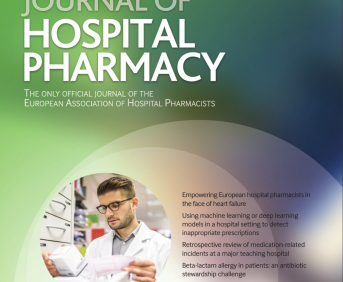AN AUDIT OF DISCHARGE PRESCRIPTIONS FOR SURGICAL AND MEDICAL PATIENTS WITH A QUALITY IMPROVEMENT INITIATIVE (submitted in 2019)
Pdf

European Statement
Patient Safety and Quality Assurance
Author(s)
Eva Heffernan, Deirdre Smith , Avril Tierney, Louise McDonnell
Why was it done?
Transitions of care such as hospital discharge present an opportunity for medication error. Lapses in communication at this interface are common. For the next healthcare provider (HCP) to issue the correct medication safely and in a timely manner, the discharge prescription needs to bridge this communication gap. Prescribing errors are the most frequent subtype of medication errors and can be repeated systematically for prolonged periods. Detection of medication error using tools such as audit, learning from these errors and planning corrective action is essential to building safer healthcare systems.
This study adapted the Health Information and Quality Authority (HIQA) national standard for patient discharge summaries to create a benchmark for discharge prescriptions in SVPH. A QI initiative targeting prescribers was developed. This was designed as a bundle intervention and was called the Discharge Prescription Education Bundle (DPEB).
What was done?
The aim of this project was to evaluate the current level of discrepancies on discharge prescriptions for surgical and medical patients and to ascertain if a quality improvement (QI) initiative can impact on the severity of medication error at the point of discharge.
How was it done?
Uncontrolled consecutive baseline and re-audit of discharge prescriptions on a 26-bed mixed medical and surgical ward. The baseline audit assessed 70 patients’ discharge prescriptions. Deviations from the standard were termed discrepancies. Discrepancies were divided based on capacity to cause error (NCC-MERP Category A) and error occurred (NCC-MERP Category B-I). Discrepancies where an error occurred (NCC-MERP Category B-I) were reported using the in-house medication incident reporting (MIR) system and dually assessed by an independent panel and the project lead for potential to cause harm. The QI initiative was implemented and its impact assessed with a re-audit of 70 patients’ discharge prescriptions.
What has been achieved?
The overall number of discrepancies reduced from 156 in the baseline to 59 in the re-audit (p<0.05). Overall compliance with the audit standards improved from 17.1% to 54.3% (p <0.05). In the baseline audit 22.8% (n=16) of patients had a discrepancy where an error occurred; this reduced to 2.65% (n=2) in the re-audit (p<0.05). The severity of errors reduced in the re-audit.
What next?
The QI initiative used was proactive not reactive. Use of the discharge education bundle was not restricted to pharmacy opening hours.
This initiative was very low cost to implement. Following on from the successful results of this project one component of DPEB called the discharge prescription visual prompt is now preprinted on all SVPH discharge prescriptions as a reminder to prescribers.
SAFE PRESCRIBING METRICS FOR HOSPITAL PHARMACY (submitted in 2019)
European Statement
Patient Safety and Quality Assurance
Author(s)
Oran Quinn, Anna Marzec
Why was it done?
Errors of miscalculation, doses inappropriate for renal function and at extremes of weight were reported when doses of medication were written as ‘mg/kg’ without stating the dose to be given e.g. Gentamicin 5mg/kg, Vancomycin 15mg/kg and Enoxaparin 1.5mg/kg.
What was done?
A quality improvement initiative to resolve issues with prescribing medications dosed by weight. Nursing staff were identified as ‘gate-keepers’ who could refuse to administer medication inappropriately prescribed. Identification, agreement, education and feedback were necessary to change prescribing practice and support nursing staff. Hospital doctors were required to calculate and prescribe the total dose to be given. Feedback was given by monthly bulletin.
How was it done?
Support from key stakeholders was sought to endorse the initiative. Verbal and written education was given to nursing, medical and pharmacy staff to implement the initiative on an agreed date. Refusal to administer medication unsafely prescribed was key to successful implementation. Patient’s weight was not always available and additional equipment was provided to overcome this problem. The risk of withholding treatment was considered and an escalating referral process was recommended contacting the Senior House Officer, then Registrar and ultimately the patients Consultant to avoid lengthy delays to patient treatment. Nurses felt supported in refusing to administer medication.
What has been achieved?
A point prevalence study of all inpatients was carried out monthly to ascertain the level of compliance Mar-19 Apr-19 May-19 Jun-19 Jul-19 Aug-19 % of patients with total dose prescribed correctly 67.0 86.7 96.7 100.0 100.0 88.9 87.5. Results showed overall improvement from March to August and full compliance in May and June. Success was achieved through a multidisciplinary approach involving all key stakeholders, a forcing function and support from and for front line staff.
What next?
This initiative has been further developed to become ‘Monthly Safe Prescribing Metrics’.
Other prescribing metrics such as using ‘iu’ dosing for Insulin, prescribing appropriately for patients at extremes of weight and using the abbreviation ‘mcg’ for medications dosed in ‘micrograms’ were included. Initiatives to improve all metrics are ongoing.
Safe prescribing metrics could help to positively influence prescribing culture in other healthcare settings.
HERA – A NEW TOOL FOR THE QUALITATIVE AND PHARMACOECONOMICAL EVALUATION OF GENERIC DRUG PRODUCTS BEFORE CHANGING BRANDS (submitted in 2019)
Pdf

European Statement
Selection, Procurement and Distribution
Author(s)
Steffen Amann, Rudolf Bernard, Georg Berndt , Meike Bindemann, Myga Brakebusch, Jörg Brüggmann, Frank Dörje, Miriam Gyalrong-Steur, Anita Kellermann, Markus Müller, Elfriede Nusser-Rothermundt, Rainer Riedel, Eva Tydecks
Why was it done?
Given rising cost-pressure and increasing numbers of supply shortages, changes between generics have become daily practice in hospital pharmacies. To ensure constant treatment quality and patient safety, the equivalence of a potential new product with the current one must be guaranteed before changing brands. So far there has been no transparent, standardised tool for the comparison of generics workable in everyday clinical practice. Developing such a tool was our project’s aim.
What was done?
We developed an Excel-based tool for the qualitative and pharmacoeconomical evaluation of generics before changing brands (aut-idem substitution) in hospitals.
How was it done?
A working-group of pharmacists from seven hospitals developed the “HERA” tool (HTA-evaluation of geneReric phArmaceuticals). Starting from a base version, 22 generic products were assessed with the tool during five evaluation rounds. Based on these results the instrument was gradually refined. Within HERA‘s Excel matrix a potentially to-be-used generic is compared with the current one. The economic evaluation is based on unit prices and prescription volumes, but also includes process costs associated with the product change. The assessment of pharmaceutical quality is based on 34 criteria from six areas (licensed uses, drug substance, dosage form and excipients, handling, safe design, packaging and storage). The objective quality evaluation is complemented by the assessment of hospital-specific features. Complex substitutions – e.g. associated with a handling change – require involvement of the medical staff using the product. The purchasing decision is taken based on the synopsis of pharmaceutical quality and economic evaluation.
What has been achieved?
The standardised evaluation of product differences before substitutions allows for the early identification of potential problems of brand changes and helps avoiding them for the benefit of patient safety. HERA also guarantees reproducibility and transparent, QM-compliant documentation of product changes. The pharmacies of our purchasing group now routinely use HERA for the assessment of generics before intended brand substitutions. Each evaluation is conducted in one pharmacy and shared with the others via data-cloud.
What next?
We have published a paper on HERA and presented it at the German Hospital Pharmacists congress in 2018. Our aim is to create a network of colleagues with shared access to all colleagues’ HERA product evaluations to reduce the workload for the individual pharmacies.
THE IMPACT OF A WARD SATELLITE PHARMACY ON CLINICAL PHARMACY SERVICES AND POTENTIAL COST BENEFIET (submitted in 2019)
Pdf

European Statement
Patient Safety and Quality Assurance
Author(s)
Thewodros Leka, iun Grayston, Mashal Kamran, Biljana Markovic
Why was it done?
The Carter report recommended that about 80% of hospital pharmacist time should be spent on the wards to provide clinical pharmacy services. However, in our hospital’s surgical specialty at the time of this report, it was found that only 33% of pharmacist’s time was spent on clinical pharmacy services. This had a negative impact on:
• rate of medication errors and near misses
• supply of critical medicines
• pharmacist participation in productive ward rounds
• timely discharge of patients home
What was done?
The Pharmacy department made a successful business case to the Hospital executives to open a Satellite pharmacy to serve 4 surgical wards. The proposal was to recruit a dedicated clinical pharmacist and Medicines Management Technician, and set-up a dispensing satellite pharmacy.
How was it done?
The business case indicated that if funded, the new satellite pharmacy team would: • improve clinical pharmacy key performance indicators • improve patient safety • deliver a potential cost benefit Funding limitation was an obstacle and we have to convince the board.
What has been achieved?
We achieved 60−90% improvement in the objectives set in the business case as illustrated in Table 1 and 2. The pharmacy team won the annual quality improvement award of 2018. Table 1: Clinical Pharmacy Service improvement Clinical pharmacy services Service rate pre-satellite pharmacy Service rate post satellite pharmacy % of service improvement Medication errors 16/month 6/month 63% Pharmacist interventions 20/month 80/month 75% Pharmacist participation in ward round 6/month 50/month 88% Time to dispense discharge summaries 90 minutes/discharge summary 20 minutes/discharge summary 77% Number of patients counselled 15/month 75/month 80% Pharmacist available in the ward 1.5 hrs/day 7.5 hrs/day 80% Time taken to supply critical medicines 1 hour 5 minutes 91% Table 2: Potential Cost-benefit savings achieved Activities Cost-benefit savings/year (€) Reducing length of stay of patients €17,000 Reducing repeat dispensing €16,000 Effective use of nursing time €11,000 Reducing prescribing errors €103,000 Total Savings €147,000.
What next?
• Weekend working.
• Service improvements can be transferred to acute medical units and downstream medical wards. Reference Carter report.
VENOUS THROMBOEMBOLISM PREVENTION MEASURES FOR WOMEN IN PREGNANCY AND THE PUERPERIUM (submitted in 2019)
Pdf

European Statement
Patient Safety and Quality Assurance
Author(s)
Sheena Patel, Sima Purohit, Jennifer Hanna
Why was it done?
• VTE remains the leading cause of direct maternal death, with no evidence of a consistent decrease in mortality over the past 20 years.
• Alongside changes in national guidelines, the maternity population and interventions are changing e.g. women giving birth are now older with more risk factors for thrombosis e.g. obesity. More interventions e.g. caesarean section are undertaken placing women at higher risk of VTE.
• VTE prevention measures were introduced in 2010, and nearly 10 years on further changes were implemented to reduce mortality and morbidity.
What was done?
Venous thromboembolism (VTE) prevention measures introduced and embedded for women in pregnancy and the puerperium, with an aim to reduce potentially preventable hospital-associated events
How was it done?
• Electronic VTE risk assessment introduced with mandatory alerts at relevant time-points e.g. at booking, on admission, post-delivery • Simplification of the national VTE risk scoring system to ensure accurate completion of assessment and user-ability • Clear hospital guidance on VTE prevention for pregnant women, including a pocket guide covering risk assessment and thromboprophylaxis • Staff education on mechanical thromboprophylaxis for correct use and monitoring to avoid adverse effects • VTE patient information leaflet covering signs and symptoms of VTE and when to seek urgent medical attention • Introduction of a ‘mum and baby’ app with information during pregnancy and postpartum • Root cause analysis performed on hospital associated VTE events, with shared learning of root causes and actions to prevent recurrence to multidisciplinary teams • VTE education introduced in medical, midwifery and pharmacy staff training programmes, with regular updates in the maternity risk newsletter
What has been achieved?
• Over 95% of women with VTE risk assessments on admission, with weekly and monthly performance reports for local monitoring • Pharmacy staff perform quarterly audits on appropriate thromboprophylaxis. 97% inpatients received pharmacological thromboprophylaxis, and 88% inpatients were wearing anti-embolism stockings • Pre-printed VTE management plan in maternity documentation to assist with transfer of care • Development of an ‘app’ to provide patient information • Patients counselled on anticoagulant therapy to support medication compliance • VTE education embedded in training programmes • VTE ward rounds for ongoing stewardship
What next?
• Staff engagement to embed VTE prevention measures in practice
• Increasing patient education on VTE prevention
• Robust and sustainable interventions improving patient outcomes
OPTIMIZATION OF INTRANET COMMUNICATION TO THE CLINIC
Pdf

European Statement
Education and Research
Author(s)
Nina Kærgaard Hansen
Why was it done?
The initiative was performed to investigate the accessibility and usability of the current intranet in order to improve intranet information and communication from the hospital pharmacy to the clinic.
What was done?
Workshops with usability tests were performed with four different professions who are expected to use the intranet information and communication from the hospital pharmacy.
How was it done?
Workshops for selected professionals including pharmacists, pharmaconomists and nurses were held. The workshops consisted of four parts:
1. Video capture and recording test: Participants were asked to find specific information on the intranet. Comments, clicks and movements of the mouse were recorded during the task.
2. Sorting and prioritization the pages: Participants were given screen shots of 57 pages from the intranet. The participants were asked to sort the pages in three categories: need to know, nice to know and insignificant.
3. Evaluation of selected texts: Participants were given 5 examples of texts from the intranet and asked to assess if the text was relevant and understandable.
4. Structured focus group interview: Using a structured interviewguide the use and challenges experienced by the participants were explored.
What has been achieved?
From the present initiative it was found that the structure of the intranet was not optimal and did not reflect the daily needs from the users. The results from the workshops provided a clear guideline on how to restructure the intranet. It is important to make short cuts and optimize search function.
In addition, the initiative revealed how to improve texts:
– Write shortly, concisely and action oriented: “Tell us what to do”.
– Write the most important first, then elaborate and insert links to learn more.
– Use subheadings for skimming the text.
What next?
A campaign is planned to advertise the new intranet structure. Number of users and subscribers on the intranet pages is followed to see if the activity increases. Editors have been educated to write texts that are short, concise and written in an action oriented language
IMPLEMENTATION OF INDIVIDUAL, HOSPITAL PHARMACY-COMPOUNDED NEONATAL TPN
Pdf

European Statement
Production and Compounding
Why was it done?
Individual total parenteral nutrition (TPN) for neonates was originally compounded by nursing staff on the respective wards. This process of TPN compounding was error-prone. Documentation and traceability was inadequate. Clean room conditions were absent. By transferring the compounding of TPN from the ward to the pharmacy level, several aims were accomplished. Time of nursing staff was released and the highest quality standards for compounding were implemented. By doing so, several types of errors (e.g. overdosing, wrong additives) were eliminated.
What was done?
Development and implementation of nutrition support protocols by using an electronic prescribing and compounding software (catoPAN™) to address the special needs of neonates and ensure a high level of individualized care.
How was it done?
In cooperation with neonatologists, nutrition protocols were developed. Furthermore, a TPN compounding process was implemented and validated, including the validation of catoPAN™ software and compounding pumps. An integrated risk analysis was performed, stability data to allow TPN supply for weekends were generated and fail-safe procedures were determined. To finally succeed, various process and organizational changes concerning the wards, the production and the QC department of the hospital pharmacy were required.
What has been achieved?
Compounding of individualized nutrition solutions within defined standards, predetermined specifications and quality attributes is implemented. The production process is continuously monitored, including complete traceability. A strong interprofessional collaboration between physicians, nurses and pharmacists was established, ultimately leading to a high level of confidence among all members. Workload of nurses in terms of compounding medicines was dramatically reduced.
Currently, we provide nutrition bags for four wards (24 ICU- and 30 intermediate care beds), equaling an average production of 50 bags per day. In 2016, a total of 11.126 bags were supplied, implying an increase of 75% compared to 2015. We expect an increase of around 30% in 2017 due to rising demand.
What next?
With the expansion of TPN compounding to further pediatric wards, new nutrition protocols addressing other requirements have to be developed. Process changes are likely to follow. Further support can be provided by pharmacy-based IV admixture service. Additionally, due to current software updates, the prescribing and compounding software catoPAN™ must continually be revalidated.
A 72 hours training program for pharmacy residents to perform secure, optimized and standardized medication review orders: a proof of concept
European Statement
Education and Research
Author(s)
Sophie Renet, Florian Le seigneur, Ratiba Haddad, Andre Rieutord, Marie Camille Chaumais
Why was it done?
The high turn over rate of medical and pharmacy residents (every 6 months) could jeopardize the patient’s care management as they generally lack of appropriate skills upon arrival. Our former process medication review was relying on individual and heterogeneous competencies of pharmacy residents likely to lead to sub-optimal medication review and treatment optimisation. We had to design a training program for residents according to the constraints of time and characteristics of related treatment of the considered clinical ward recruited patients.
What was done?
A training program for pharmacy residents was developed and implemented. The aim was to develop the skills of the residents to allow them to perform, after 72 hours, a secure, optimized and standardized (SOS) medication review orders, according to the specificities and the “real-life practice” of the clinical department.
How was it done?
Through a collaborative approach (residents and seniors pharmacists, physicians, PhD student in education sciences), ADDIE (Analyse, Design, Development, Implantation, Evaluation) method was used. First, the most frequent pathologies and drugs prescribed in the cardiology department were identified to define specificities and thus custom the educational needs and skills that residents have to acquire to ensure a SOS medication review orders. The program included a 3 steps process over 3 days: (1) recognize the organisation and learning tools; (2) practice 3 clinical medication review orders simulation; (4) assess and feed-back with a senior clinical pharmacist. Some learning tools were developed: a training tool kit to guide the learners ; an aid kit, including a SOS medication review orders algorithm to follow throughout the whole process. Two years after implementation, 4 pharmacy residents have used this training program.
What has been achieved?
Our 72-hours-training program is routinely used for new pharmacy residents. It has been implemented successfully with a high acceptance. They also felt more comfortable to suggest therapeutic advices to the physicians.
What next?
The proof of concept of SOS was successfully done. We are currently extending it for 5th year pharmacy students and develop similar training program for other clinical wards (Surgery, oncology, immunology). In 2017, we expect to share it with our pharmacist colleagues working in the two closest hospitals.
